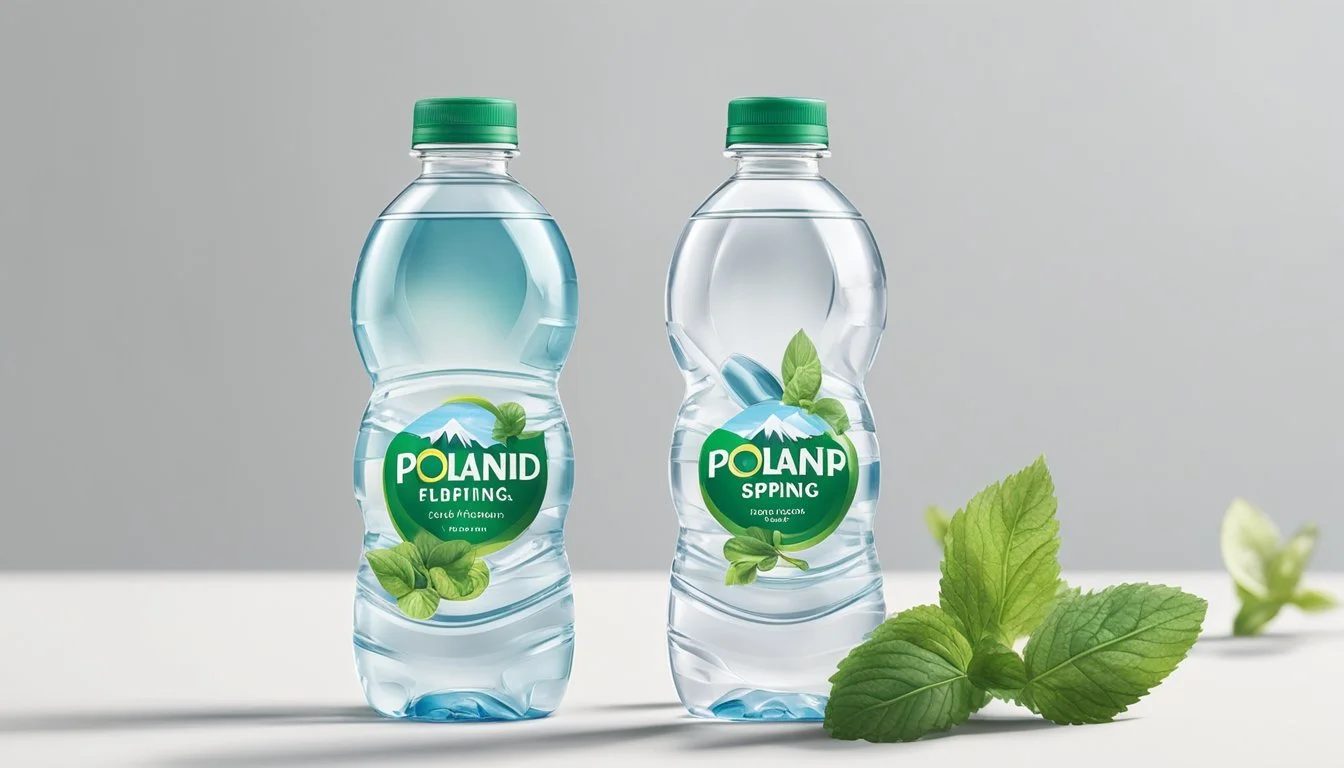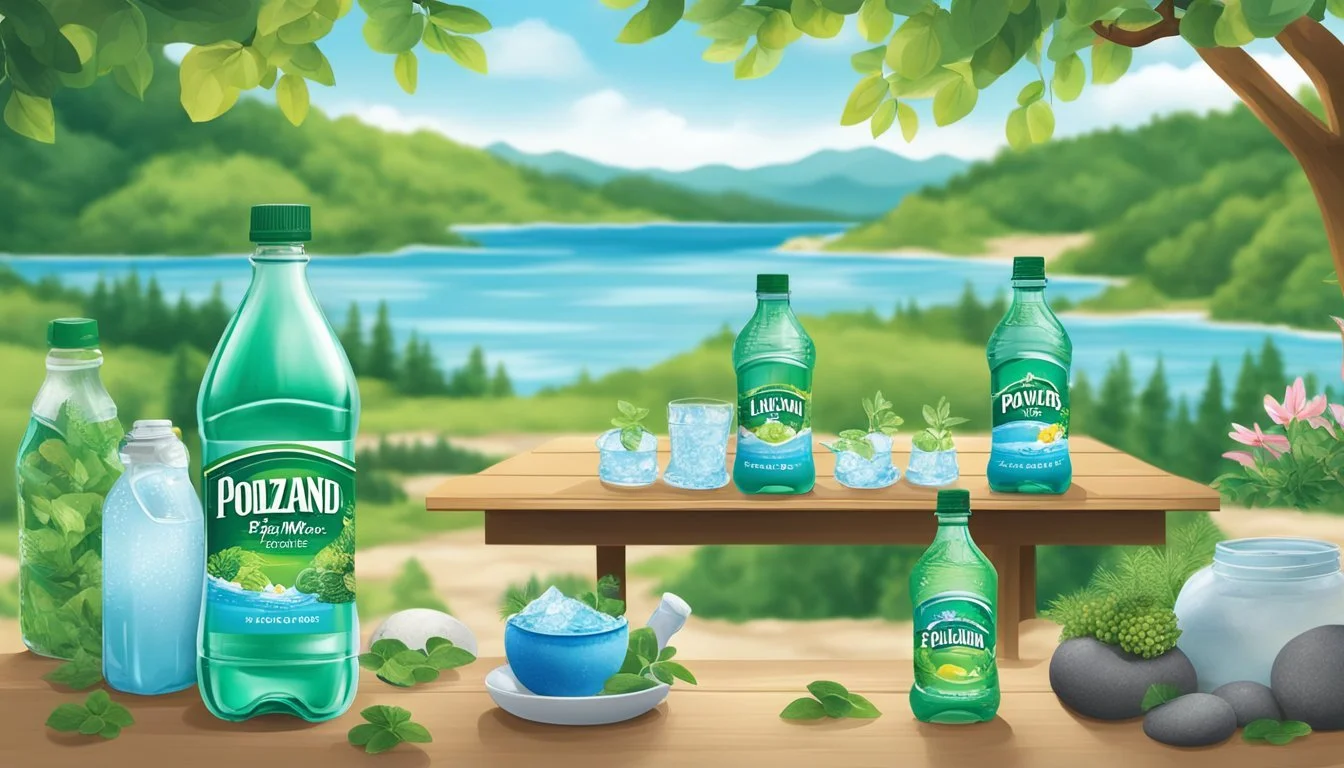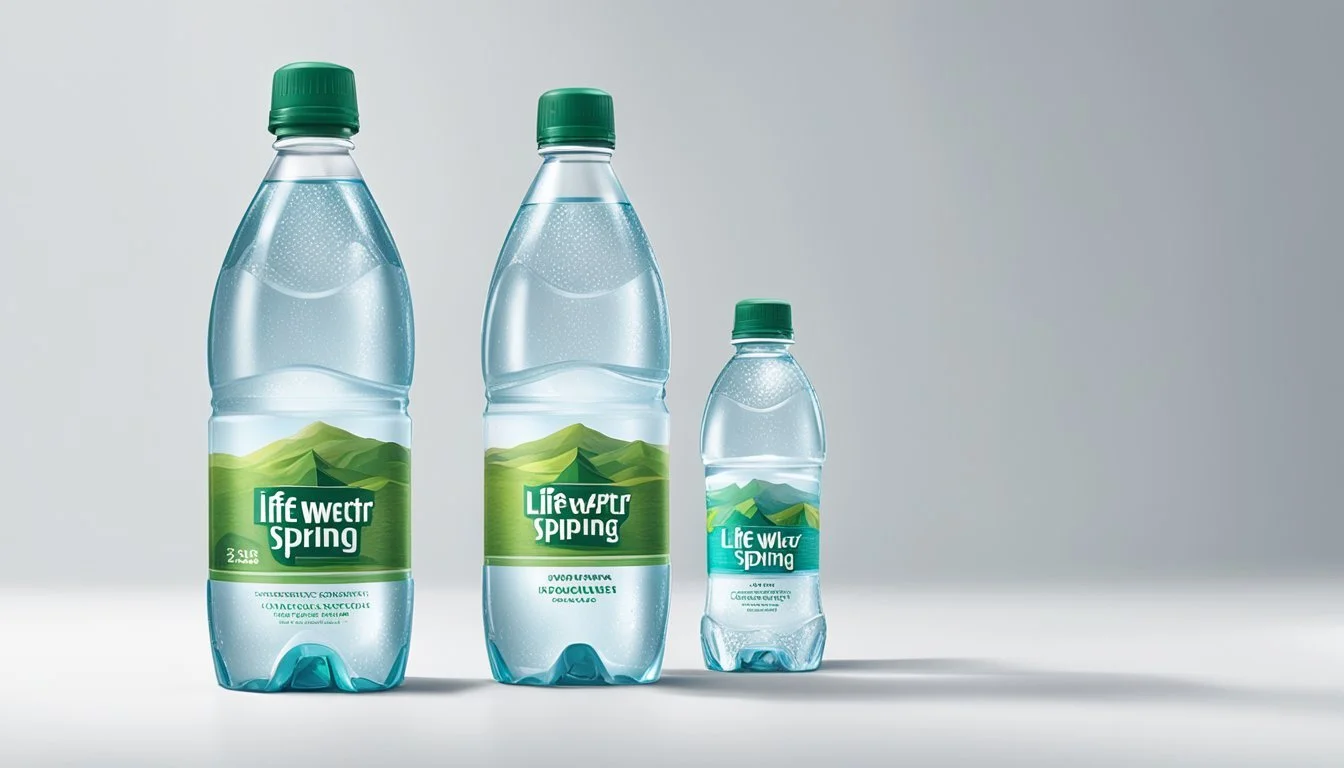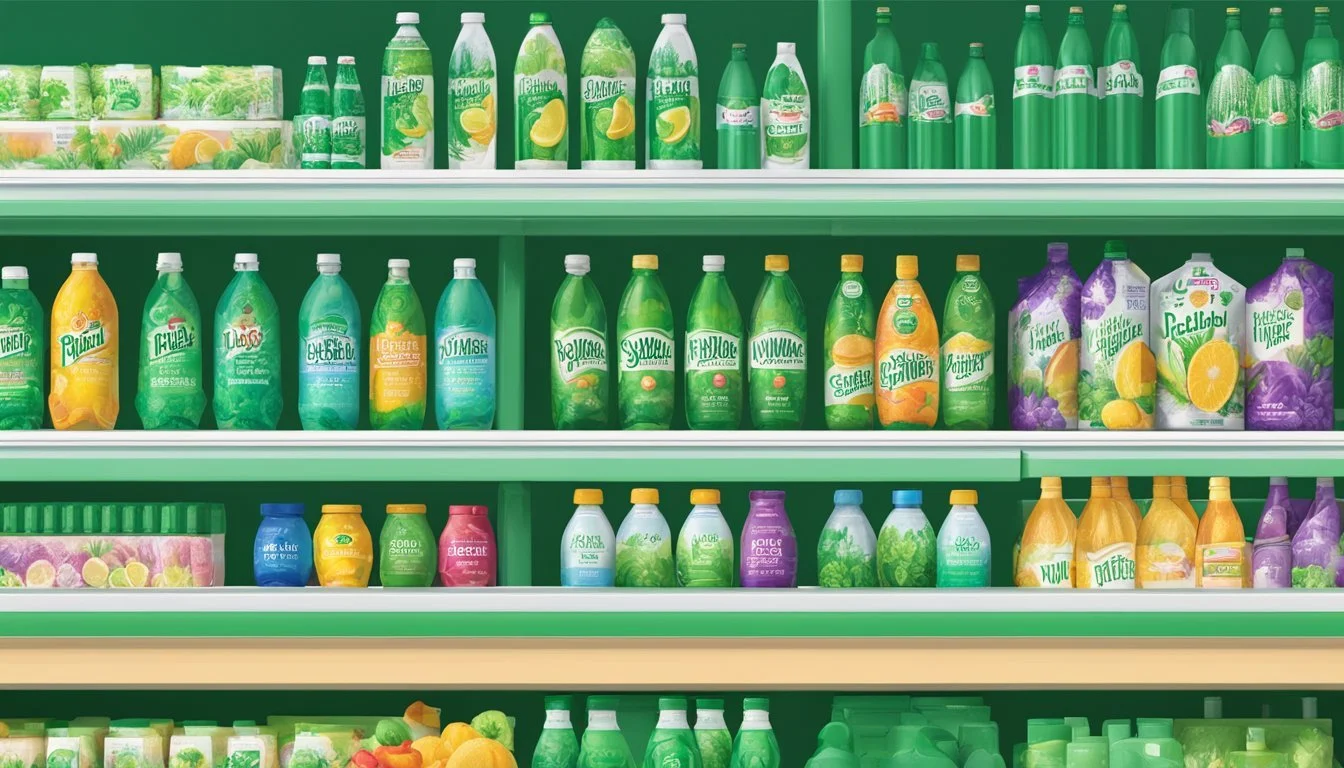LIFEWTR vs. Poland Spring
Comparing Quality and Taste
In the world of bottled water, two brands often come to the forefront of consumer choices: LIFEWTR and Poland Spring. Analyzing these brands reveals a dynamic contrast, not only in their source and bottling processes but also in their brand philosophies and target markets. LIFEWTR is marketed as a premium brand, offering purified water that is pH balanced with added electrolytes for taste.
Poland Spring, on the other hand, claims a heritage stretching back to the 1800s, with its water sourced from multiple springs in Maine. Marketed as 100% natural spring water, it emphasizes its regional roots and natural filtration processes. This comparison seeks to provide clarity on which brand might suit consumers' needs better, looking beyond just the packaging and branding, and focusing on the quality, taste, and overall value of the product.
Understanding Bottled Water
In the quest for hydration, consumers are often confronted with a choice between tap water and various types of bottled waters. Each bottled water product offers a unique profile of minerals and adherence to specific regulations and standards.
The Basics of Bottled Water
Bottled water is a convenient option for drinking water that comes in various forms. It's sought after for its perceived quality, portability, and in some instances, its mineral content. People turn to bottled water for hydration when the quality or taste of tap water doesn't meet their preferences or when they're on the go and need a convenient drinking solution.
Types and Sources of Bottled Waters
Bottled waters can originate from different sources and go through various filtration processes:
Natural Spring Water: This type of water flows from a natural spring and is collected at the source. It must retain the same mineral composition and properties it had at the source to be marketed as such, like Poland Spring.
Purified Water: Often derived from a public water source, purified water undergoes treatment like reverse osmosis, distillation, or carbon filtering to remove contaminants and may not contain any trace minerals unless they are added back in.
Mineral Water: Harvested from a mineral spring, mineral water contains a specified amount of trace minerals. These minerals, such as calcium and magnesium, can confer a distinctive flavor.
Regulations and Standards
In the United States, bottled water must comply with the regulations and standards set by the Food and Drug Administration (FDA), ensuring it meets minimum safety and quality criteria before it can be sold. The Environmental Protection Agency (EPA) regulates tap water, which ensures that consumers receive safe and drinkable public water. The oversight by these bodies ensures that standards for contaminants, such as heavy metals and bacteria, are strictly maintained, making bottled waters as safe as tap water. Additionally, bottled water labels must accurately represent the content and type of water inside.
Exploring the Contenders
In the arena of bottled water, two significant brands stand out for their unique offerings: LIFEWTR, with its emphasis on art and filtration, and Poland Spring, known for its source in the springs of Maine.
LIFEWTR
LIFEWTR is a premium bottled water brand that is a subsidiary of PepsiCo, positioned as a competitor to Coca-Cola's smartwater. The water undergoes reverse osmosis and is enhanced with electrolytes for taste. Each bottle features a label adorned with rotating designs by emerging artists, underscoring the brand's commitment to arts and creativity.
Poland Spring
Poland Spring is a brand of natural spring water that has been sourced from Maine, United States, since 1845. Owned by Nestlé, its water is extracted from multiple springs in the state, and it is marketed as 100% natural spring water. Poland Spring emphasizes its long-standing heritage and commitment to the environment through efforts in sustainability and recycling.
Taste Profiles
When comparing bottled waters like LIFEWTR and Poland Spring, one must consider the unique taste profiles that each brand offers. These profiles are largely influenced by the mineral content and the local sources from which the water is drawn.
Minerals and Flavor
LIFEWTR is characterized by its inclusion of electrolytes added for taste. This brand blends distilled water with potassium bicarbonate and magnesium sulfate to enhance flavor, giving it a distinct taste that may be described as smooth with a slightly alkaline pH.
Poland Spring originates from multiple springs in the state of Maine and is known for its natural filtration process. Here, the water acquires minerals naturally as it flows through geological formations. Poland Spring's mineral profile gives it a refreshing taste, regarded by some for its purity and balanced pH.
Comparative Taste Test
In a comparison of LIFEWTR and Poland Spring, individuals might find that:
LIFEWTR exhibits a somewhat crisper taste due to its added electrolytes, which may be preferable to those seeking a more enhanced flavor profile similar to sports drinks.
Poland Spring is often favored for its natural mineral flavor that reflects the terroir of Maine's spring water sources.
It should be noted, while LIFEWTR and Poland Spring have distinct mineral qualities, other brands like Dasani and Aquafina are also known for their purification processes — Dasani adds a combination of minerals, while Aquafina boasts a rigorous purification system. Evian, on the other hand, offers a unique mineral content due to its Alpine source. These differences in taste and mineral content are important factors for consumers when choosing a bottled water that suits their palate.
Health and Safety Considerations
When comparing LIFEWTR and Poland Spring, it is vital to consider how each brand approaches health and safety through mineral content, potential contaminants, and packaging materials.
Mineral Content
LIFEWTR is known to add electrolytes such as magnesium sulfate, potassium bicarbonate, and calcium chloride for taste and hydration. This enrichment with minerals does not only influence the flavor but can also contribute to the dietary intake of these minerals. On the other hand, Poland Spring is a natural spring water that contains naturally occurring minerals, potentially absorbed through volcanic rock filtration, including calcium, magnesium, and bicarbonate.
Risk of Contaminants
The purity of bottled water is paramount for health. LIFEWTR is purified through a process involving reverse osmosis and ultraviolet light exposure, which is known to reduce the presence of contaminants, such as heavy metals, chlorine, and fluoride. Poland Spring, however, has faced allegations through a class action lawsuit claiming their water contains microplastics. Although it's important to note that no universally recognized safe consumption levels of microplastics in water have been established, the company has faced scrutiny over the purity claims.
The Question of BPA
Consumers are increasingly aware of BPA (bisphenol A), a chemical commonly used in plastic packaging that can leach into water and potentially affect health. LIFEWTR prides itself on being in BPA-free packaging, which may alleviate some consumer concerns about chemical intake. Poland Spring has also made efforts to provide BPA-free bottles, reflecting a trend in the bottled water industry toward safer packaging materials and contributing to consumer peace of mind.
Environmental Impacts and Sustainability
Choosing between LIFEWTR and Poland Spring, consumers often consider the environmental ramifications of their bottled water preferences. This section delves into the importance of sustainable packaging and the ongoing efforts to reduce plastic waste.
Bottled Water and Plastic Waste
Bottled water companies generate significant plastic waste, which poses a problem for the environment. LIFEWTR specifies that its bottles are made of 100% recycled plastic, which helps reduce the demand for new plastics. They emphasize their commitment to environmentally friendly practices.
On the other hand, Poland Spring has faced criticism for environmental concerns. According to a court filing, Poland Spring's owner, BlueTriton, admitted to making "vague and hyperbolic" sustainability claims. The brand also announced intentions to transition to 100% recycled plastic by 2022, a step towards reducing its environmental impact.
Sustainable Options
Exploring sustainable alternatives in the bottled water industry, some companies have introduced innovative solutions to address environmental concerns:
Boxed Water packages its product in cartons that are made from trees from well-managed forests, promoting a more sustainable option compared to traditional plastic bottles.
Brands like La Croix and Arrowhead continue to offer products in recyclable containers but the extent and effectiveness of recycling vary.
Advanced filtration processes, including ozone treatment, allow brands to ensure water purity while also considering sustainability.
Manufacturers have increasingly begun using materials free from BPA (Bisphenol A), a chemical found in some plastics that can seep into food and beverages, leading to potential health risks.
When examining convenience and environmental responsibility, consumers are encouraged to consider the efforts that bottled water companies make to incorporate recycling in their production and post-consumer processes.
pH Levels and Alkalinity
The pH level of bottled water is a crucial metric that can influence both taste and potential health benefits. With a neutral pH being 7, waters below this are considered acidic, while those above are alkaline.
Benefits of Alkaline Water
Alkaline water, such as LIFEWTR and Essentia, typically has a high pH level, often around 8 or 9. Advocates for alkaline water argue that it can help neutralize acid in the bloodstream, leading to increased oxygen levels and improved metabolism. Essentia boasts a pH of 9.5, attributing to its electrolytes for taste, which they claim delivers hydration and a smooth taste.
Acidity in Bottled Water
On the other end of the spectrum, some bottled waters like Poland Spring and Deer Park maintain a pH closer to neutral. These waters are less likely to have the basic or alkaline qualities of brands like Core Hydration or smartwater. Evian, known for its mineral content, is naturally alkaline, with a pH level that typically hovers around 7.2, not quite as high as Essentia or Core Hydration, which market themselves on their higher pH levels.
The Business of Bottled Water
The bottled water industry distinguishes itself through brand image and alliances. Companies like Coca-Cola and Nestlé lead the market with branding strategies that appeal to consumers' lifestyle choices and association with purity.
Market Leaders and Brand Differentiation
Coca-Cola, one of the titans in the beverage industry, has ventured into bottled water with its brand LIFEWTR, focusing on lifestyle branding. LIFEWTR sets itself apart with bottles featuring rotating art labels, appealing to consumers who value creativity alongside hydration. Nestlé, another market giant, markets Nestlé Pure Life as an affordable and purest water possible option, emphasizing health and wellness.
The variety in the bottled water market is significant, with brands like Fiji and Voss leveraging their exotic sources – the Fijian and Norwegian wilderness – as a unique selling proposition. These brands convey a sense of luxury and have become status symbols in certain circles. The emphasis on a product's origin story often correlates with its market price and consumer perception.
Brand Partnerships and Endorsements
Effective branding frequently ties bottled water to celebrities or organizations. For instance, Elvis Presley had been one of the early big-name endorsements in beverage marketing, showing how powerful star association can be for a brand's image. Current endorsements might not directly mirror the King of Rock's effect but still play a substantial role in consumer decision-making.
Strategic alliances extend beyond individuals to encompass event sponsorships and charity partnerships, enhancing brand visibility and goodwill. Nestlé Pure Life sustains a family-friendly image, promoting proper hydration for children and families, while Voss capitalizes on the allure of high fashion and upscale lifestyle by partnering with luxury hospitality venues and events. These partnerships not only serve to advertise the product but also associate the brand with particular values and standards that resonate with their target market.
Consumer Preferences and Trends
When considering the bottled water market, consumer preferences have recently tilted towards health consciousness and economic impacts when choosing their preferred hydration options, influencing the polarized views on brands like LIFEWTR and Poland Spring.
Trend Towards Health Consciousness
Customers today exhibit a greater awareness regarding the health benefits of bottled water and are thus seeking products enriched with minerals and electrolytes for optimal hydration. LIFEWTR emphasizes its inclusion of electrolytes for taste and pH balance, aligning with consumers’ interests in hydration and health. Poland Spring, marketed as a natural spring water, points to its natural mineral content. This movement towards health consciousness also makes consumers vigilant against negative additives potentially pegging a brand as the worst rather than the best bottled water option, as seen in some rankings.
Economic Factors
Economic considerations play a significant role in decision-making. Consumers balance between the affordability of brands like Poland Spring and the perceived value of more premium brands such as LIFEWTR. Here's a quick glance at the affordability:
Brand Price Range Notes Poland Spring $ Economical Widely available, budget-friendly LIFEWTR $$ Premium Marketed as a premium choice
The debate between convenience and the desire for premium products continues to shape the industry. While some may opt for the convenience and affordability of Poland Spring, others may lean towards the artistic and elevated branding of LIFEWTR, despite a higher cost, expecting a best bottled water experience. Consumers are strategically choosing where to spend based on individual beliefs about cost versus quality benefits.
Final Comparison and Verdict
When deciding between LIFEWTR and Poland Spring, consumers are often concerned with purity, sourcing, and taste, as well as any added minerals for health benefits.
LIFEWTR is a premium bottled water brand that prides itself on its pH balance and electrolyte enhancement. It is purified water, which has been fortified with electrolytes like potassium bicarbonate and magnesium sulfate for taste. The magnesium sulfate in LIFEWTR can contribute to the daily intake of this essential mineral, which could be perceived as a value add for consumers looking for more than just hydration.
Poland Spring, on the other hand, is sourced from natural springs in Maine, and its taste is influenced by the surrounding environment. The brand offers a straightforward spring water experience, without additional electrolytes or enhancements. Its reputation lies in the claim of being natural spring water, which may appeal to those seeking a product with minimal processing.
Aspect LIFEWTR Poland Spring Source Purified Water with Added Electrolytes Natural Spring Water Minerals Potassium Bicarbonate, Magnesium Sulfate Naturally Occurring Minerals Taste Enhanced for a balanced pH Natural, untouched taste from the spring Purpose Hydration with added electrolytes Pure hydration
Consumers who prefer enhanced water with added minerals for taste and potential health benefits may lean towards LIFEWTR. Those who favor the taste of water directly from a natural source may find Poland Spring more appealing. Both brands offer distinct qualities, and the choice ultimately rests on individual preferences regarding taste and the importance of added electrolytes.






